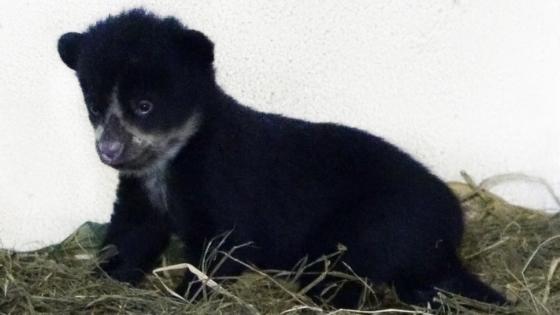Biology, behavior and reproduction of the Andean Bear
You have to tell that the Tremarctos ornatus are the only bears in South America, being solitary, excellent climbers and can present both day and night activity. It is a shy species that tends to flee from humans, but dangerous if they feel threatened. They are opportunistic and omnivorous animals, their diet includes a wide variety of fruits, animal protein and plant material, mainly plants of the bromeliad family. They can weigh up to 175 kilograms.
About its reproductive biology it can be mentioned that both males and females are reproductively fit from four years of age; females have several stages of sexual receptivity during the year to ensure fertilization and can delay the implantation of the fertilized ovum in the uterus for several months, seeking the best environmental conditions for birth. The bear cubs are born with their eyes closed and open them after 30 days. They remain with their mother in caves (this behavior being almost exclusive to the species) for between three and four months, when the infants express exploratory behaviors. Six months after delivery, they begin to feed on fruits and vegetables, weaning occurs at 12 months, and at two years they become completely independent.
It may interest you: Reasons to celebrate the life of the spectacled bear
In situ rearing, female bears have the ability to go on a prolonged fast, up to 3 months, the time that the critical stage of the bear cub lastswhich are altricial, that is, they are born blind, without open ear canals, without hair and with very limited mobility, so they are totally dependent on parental care.
In the management of ex situ rearing, after 72 hours postpartum, the Promoter who provides her usual care, with whom she has an established bond of trust, is in charge of exclusively offering dry foods of their greatest liking or palatability, this in order to avoid bacterial growth that can develop in fresh food, since she will take the food to her burrow. In this way, food supplements are supplied that promote the necessary nutrients to guarantee the production of high-quality milk for the bear cub, which develops quite quickly; At the age of 3 to 4 months, he develops an exploratory behavior with solid foods and, by imitating his mother, he will begin to consume them. It is at this moment that a food transition begins that will make it easier for you to experiment with new flavors and textures.
Conservation of the Andean bear, ecosystems and problems
Through inter-institutional work and cooperation, based on the construction and generation of actions for the preservation of vulnerable ecosystems, the Conservation Park prioritizes species with high ecosystem value in its population, such as the particular case of the Andean bear. , categorized as a species object of conservation, unique in South America, endemic to the tropical Andes and with a wide distribution in Colombia.
is considerate an umbrella species, key to Andean ecosystems since it enables the different mechanisms of forest regeneration, through seed dispersal, matter mobilization, and energy cycling. However, this large mammal is categorized by the International Union for Conservation of Nature (IUCN) and by the Ministry of Environment and Sustainable Development of Colombia, according to resolution 1912 of 2017, as a vulnerable species (VU). It has been placed in Appendix I of the Convention on International Trade in Endangered Species of Wild Fauna and Flora (CITES), which means that it is a species that cannot be traded internationally, a condition generated mainly by the reduction in its habitat due to the various negative environmental impacts generated by humans.
Besides: Strategy for the protection of the Andean bear
Since its transformation as a shelter for wildlife rescued by the Environmental Authorities, the Conservation Park has protected spectacled bears. Currently, four individuals are in this space:
- Adult male five years and two months old, handed over to the Conservation Park in December 2017 (former Santa Fe Zoo) by Corantioquia, reproductively active and currently weighing 159 kg.
- Nine year old adult female. She was born at the Fundación Zoológico de Cali on January 16, 2014 and is reproductively active. She currently has a weight of 106 kl.
- Twenty-one year old adult female.
- Two and a half month old bear cub, sex to be confirmed.
